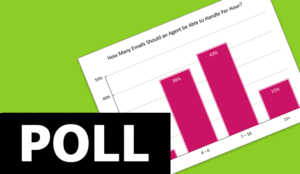Calls Per Hour
I have seen some Calls/Customers Per Hours posts about whether or not Call Centres should use this as a measure and most say we shouldn’t, however the CC I am working with have decided to bring it back. The reason for this is that AHT (one of our current measures) has been in place so long it is loosing its meaning and we can’t seem to re-inject it with life in the business despite numerous attempts.
The aim is to make this as fair as possible and use it as a guide to help agents aim to increase their productivity. This will be achieved by;
• Only using monthly data so agents on rotating shifts have had a fair number of busy/quieter shifts to average out any impact call arrival will have on CPH.
• Targeting will not be a fixed figure but rather based on the range of CPH, the 33% with the lowest CPH compared to their colleagues will be the ones highlighted to increase the number of calls they take and so become more productive. This should close the gap of agents with high CPH against agents with low CPH giving a more even level of productivity across the CC.
All of this depends on using a fair calculation for CPH.
A true CPH calculation would be;
Calls Taken / Signed on Time
However this doesn’t take into account any un-proportionate time we have booked agents out for non-phone work, so would a fairer calculation be;
Calls Taken / (Signed on Time – AUX Time – Available Time)
By taking out the AUX time (which is monitored separately by category) we remove any differences in non-phone work and by removing the available time we are taking out any affect call arrival has on this calculation.
In effect what we are doing with the 2nd calculation is actually measuring AHT from a different perspective so really we could use this calculation to obtain the same results
Calls Taken / Call Taking Time
Can I ask for your thoughts on this, does it work logically and is this best calculation for the purpose?
Question asked by Andy
Interesting Proposal
I would suggest that your final measure of calls / call taking time is really the same as AHT. I would include Availability as part of your calculation, but combine this with an ‘Onphone’ calculation. This way you can temper your RPH against the amount of time that your agents are spending available or speaking with customers. The measurement of this over a month-long period would remove any issues around call arrival due to the length of time measured.
If you are trying to achieve cost cutting/efficiency or Customer experience improvements, I guess a Time and Motion style study would be appropriate to get a view on whether your AHT target is still valid. This would provide validation of the current or a new target and an opportunity to improve your call flow process to shorten the AHT and improve your customers experience.
It also gives you some weight to discussions with agents as you will have data to back up your point.
With thanks to Scott
CPH
an alternative calculation would be to take the agents actual AHT (Talktime+Holdtime+ACW)and divide 3600 by it. 3600 being the # of seconds in an hour. For instance, my technical queue agents have an AHT of 360 seconds, and if the volume stays constant or during a spike of calls they should be taking 10 calls an hour at 100% occupancy.
With thanks to Irfan Ali
Author: Jonty Pearce
Reviewed by: Robyn Coppell
Published On: 12th Apr 2022 - Last modified: 26th Feb 2025
Read more about - Call Centre Questions















